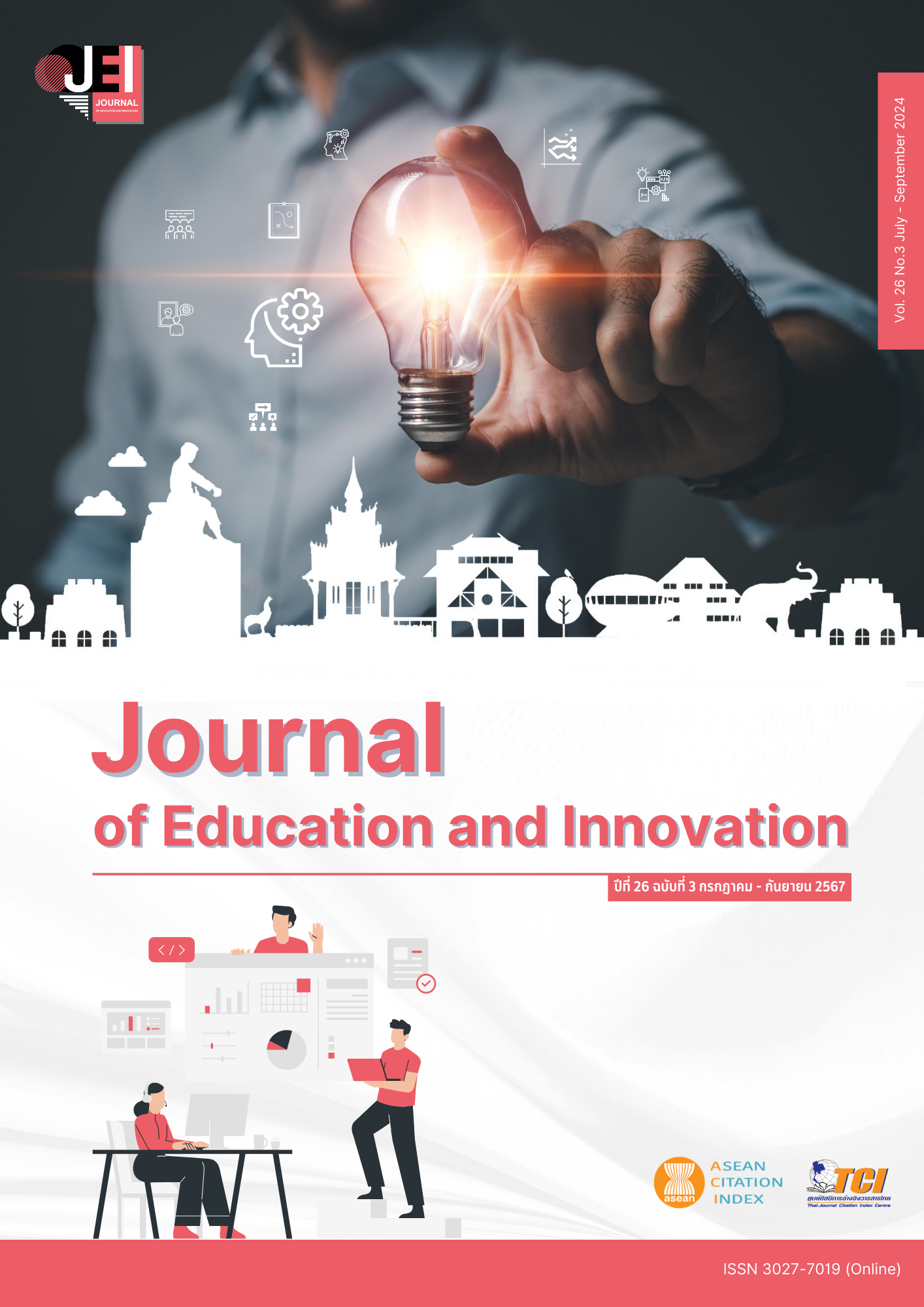ORGANIZATIONAL CULTURE CHANGE MODEL TO INCREASE THE EFFECTIVENESS OF THE SCHOOLS UNDER SURATTHANI PRIMARY EDUCATIONAL SERVICE AREA OFFICE 3
Main Article Content
Abstract
The objectives of this study were 1) to study current conditions, desirable conditions and guidelines for organizational culture Change, 2) to develop a organizational culture change model to increase the effectiveness of the schools, and 3) to validate the structural accuracy of the model. Using an integrated research and development model. The participants in this study consisted of 724 individuals who held positions administrators, teachers and experts. The researcher employed a multi-stage sampling method. The data collection instruments utilized in this study consisted of a questionnaire and an interview. The statistical techniques employed encompassed frequency, percentage, mean, standard deviation, t-test, content analysis, and Confirmatory Factor Analysis (CFA). The results indicated that: 1) the organizational culture change to Increase the effectiveness of the schools was currently at an average level of 3.98, which could be considered good. Similarly, the desired conditions had an average level of 4.46, also indicating a good level. There were significant distinctions observed at 0.01. Furthermore, guidelines for changing the organizational culture is the development of leadership that creates change, set a clear strategic vision and develop personnel towards professionalism for the good effectiveness of educational institutions. 2) Results of examining the effectiveness of this model: The model included 5 elements and 27 indicators. These elements were: (1) the personnel development; (2) the strategic plan; (3) administrators leadership; (4) participation of community; and (5) effectiveness of the schools; The average score for the efficiency was 4.79, indicating the most level of efficiency. Lastly, 3) the organizational culture change model was found to be consistent with the empirical data ( = 207.12, df = 200, p = 0.35,
/df = 1.04, CFI = 0.97, TLI = 0.94, RMSEA = 0.04). Each component has a component weight in the range of 0.766-0.937, and each indicator of the main component has a weight in the range of 0.728-0.979. There were significant difference at 0.01.
Article Details

This work is licensed under a Creative Commons Attribution-NonCommercial-NoDerivatives 4.0 International License.
The owner of the article does not copy or violate any of its copyright. If any copyright infringement occurs or prosecution, in any case, the Editorial Board is not involved in all the rights to the owner of the article to be performed.
References
Chaisongkram, K. (2019). Organizational culture change model of secondary school. Journal of Educational Administration, Silpakorn University, 10(2), 780 – 792.
Khanthongdee, P. (2019). A comparative study of organizational culture between secondary school and educational opportunity expansion school (Doctoral dissertation). Bangkok: Silpakorn University.
Kotter, J. P. (2002). John P. Kotter's 'eight steps to successful change' model. Retrieved May 15, 2022, from https://whatfix.com/blog/kotters-8-step-change-model/
Legal and legal case law research and development group. (2016). Manual for promoting the management of educational institutions that are juristic persons. Retrieved July 16, 2022, from http://kormor.obec.go.th/arti/arti002.pdf
Lumsan, S. (2022). Organizationl culture affecting the effectiveness of school administration under the secondary educational service area office Nakhonphanom. (Master thesis). Sakonnakhon: Sakon Nakhon Rajabhat University. [in Thai]
Mourfield, R. (2014). A guide to bring everyone on board (Master thesis). India: Indiana University.
Muscalu, E. (2014). Organizational culture change in the organization. Management and Economics, 4(76), 392-396.
Noimat, P. (2015). The relationship between organizational culture and the effectiveness of schools under the Secondary Educational Service Area Office 27 (Master thesis). Roi Et: Roi Et Rajabhat University.
Nunamkham, N. (2023). Factors of change management affecting effectiveness of schools under the Secondary Educational Service Area Office Bangkok 2. Journal of Education Mahasarakham University, 17(1), 70 – 83.
Ozdemir, G. (2007). Cultural change management and quality in the tourism industry. Journal of Yasar University, 2(5), 505-523.
Pongsapang, J. (2022). Organizational culture and school effectiveness under Nakhon Phathom Primary Educational Service Area Office 2 (Master thesis). Nakhon Phathom: Silpakorn University.
Sinlarat, P. (2009). Introduction to educational philosophy (6th ed.). Bangkok: Chulalongkorn University Printing House.
Suratthani Primary Educational Service Area Office 3. (2020). Self-Assessment Report: SAR academic year 2020. Suratthani: Supervision, Monitoring and Evaluation Group for Educational Management.


